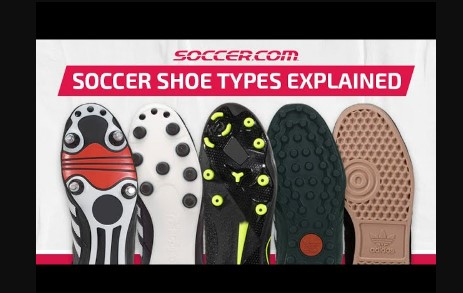Understanding the nuances of soccer footwear is crucial for enhancing your performance on the pitch. Different types of soccer shoes are carefully designed to cater to specific field conditions and player roles. From firm ground cleats to indoor shoes, each type boasts unique features to optimize grip, control, and comfort.
This comprehensive guide will navigate you through the vast world of soccer shoes, aiding you in making an informed decision that matches your playing style and conditions.

The role of soccer shoes in a player’s performance cannot be overstated. They act as an essential interface between the player and the field, regulating traction, enhancing ball control, and even influencing shooting accuracy. Proper soccer shoes can provide a critical edge in split-second situations that often decide the outcome of a match. Different shoe designs cater to various field surfaces, weather conditions, and player roles, reinforcing the importance of the right choice.
Whether you’re a goalkeeper, a defender, or an agile forward, the correct soccer shoe can amplify your individual strengths and minimize weaknesses. This is why understanding the types and characteristics of soccer shoes is so important – it can truly make a difference in your performance on the field.
What are Types of Soccer Shoes?
Firm Ground Cleats
Firm Ground Cleats, also known as FG cleats, are the most common type of soccer shoes. They are designed to provide optimal traction on natural grass pitches in dry to slightly wet conditions. The design includes multiple non-removable studs, usually made of plastic or rubber, that are evenly distributed across the sole. This stud configuration facilitates better stability and grip, enhancing speed and agility during rapid changes in direction. FG cleats are an excellent choice for players who primarily play on natural grass fields or artificial grass surfaces that mimic the feel of natural grass.
Soft Ground Cleats
Soft Ground Cleats, or SG cleats, are typically used in wet, muddy, and slippery field conditions. These cleats feature fewer studs – typically 6 to 8 – that are longer and often replaceable. The studs’ length can be adjusted to match the softness of the ground, increasing the grip and preventing players from slipping. Soft Ground Cleats provide superior traction in challenging field conditions and are favored by players who regularly play in rainy weather or on pitches with poor drainage. However, they should be used with caution on hard or dry surfaces to prevent injuries.
Artificial Ground Cleats
Artificial Ground Cleats, also known as AG cleats, are specifically designed for artificial turf surfaces. These cleats have numerous small studs spread across the entire sole to evenly distribute player weight and reduce stud pressure. The studs are usually shorter and more durable to withstand the hard nature of artificial grass surfaces. These cleats offer excellent traction and stability, making them suitable for players regularly playing on artificial turf pitches.
Turf Shoes
Turf Shoes, also referred to as TF shoes, are perfect for hard ground surfaces or synthetic grass fields. They have multiple small rubber studs or patterns across the bottom, providing a balance of traction and comfort on hard surfaces. Turf shoes are less aggressive than traditional cleats, offering a low-profile fit that supports the foot and ankle during quick turns and sprints. They are the go-to choice for players who play on turf or hard ground fields.
Indoor Soccer Shoes
Indoor Soccer Shoes, or IN shoes, are designed for indoor and futsal games. These shoes typically have a flat, gum rubber sole to provide grip on indoor courts and flat surfaces. They lack the traditional studs found on outdoor cleats. Instead, they have a low-profile design with excellent grip and flexibility to handle the fast-paced nature of indoor soccer. Indoor Soccer Shoes are perfect for players who participate frequently on indoor courts or futsal.
Factors to Consider When Selecting Soccer Shoes
When choosing the right soccer shoes, it’s critical to consider a variety of factors to ensure optimal performance on the field.
Playing Surface
The type of surface you play on significantly influences your shoe selection. For example, Firm Ground Cleats are ideal for natural grass fields, while Artificial Ground Cleats are designed for artificial turf. Turf Shoes work well on hard ground surfaces or synthetic grass fields, and Indoor Soccer Shoes are best for indoor courts or futsal.
Player’s Position
Your position on the field can also affect the type of soccer shoe you need. Defensive players might prefer shoes that offer more protection, while forwards might choose lightweight shoes that allow for quick movements and agility.
Weather Conditions
Lastly, weather conditions play a crucial role in choosing soccer shoes. In wet and muddy conditions, shoes with fewer and longer studs can provide better traction. On the other hand, dry and hard surfaces might call for shoes with more studs for optimal grip and control.
By taking these factors into account, players can ensure they have the right footwear for every game, enhancing their performance and reducing the risk of injury.
Conclusion
In conclusion, the selection of soccer shoes is a critical decision that can significantly influence a player’s performance and safety on the field. By carefully considering the playing surface, player’s position, and weather conditions, one can choose the appropriate footwear, whether it be Firm Ground Cleats, Artificial Ground Cleats, Turf Shoes, or Indoor Soccer Shoes.
Each type is specifically designed to meet the unique demands of the game, ensuring that players can compete at their best in every situation.
More: Exploring the World of Clogs: Types and Uses

